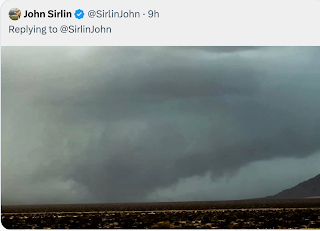U.S. Weather Services: Second to None. An Important Report..
..from the National Academy of Sciences pertaining to the future of weather services in the United States.
From their press release, here are some of the key findings:
These seem quite reasonable to me. You can read the entire report online by clicking here.
From their press release, here are some of the key findings:
Key Findings
- Significant advances in the atmospheric and hydrological sciences continue, and the NWS is struggling to maintain the pace of acquiring, integrating, and communicating critical forecast and warning information based on these advances.
- Needs for weather information have changed significantly in recent years. With the broad adoption of the internet and mobile technology, members of the public have found new ways to access weather information and make use of it in their daily lives, and now expect continuous improvements in public safety and property protection from severe weather. To meet these needs, the NWS will need to improve forecast and warning capabilities.
- At the time of the Modernization and Associated Restructuring, the delivery of weather information was largely synonymous with the NWS and the broadcasting sector. Today, the weather, water, and climate enterprise has grown considerably. Private sector and other organizations provide sensor data, weather forecasts, and end-user services to a broad set of customers, and rely heavily on core NWS infrastructure and capabilities to provide these services.
- Prioritizing the NWS's core capabilities would strengthen the products and services that the public and the enterprise depend upon, such as providing datasets based on observations, analyses, and model-based predictions, and issuing watches and warnings, and transition of research to operations. Establishing clear quality and performance metrics would help address the technical components of NWS operations, as well as the efficiency and effectiveness of the flow of weather information to end users.
- The current structure of the NWS primarily reflects the functions of the weather, water, and climate enterprise in the 1990s. It would now be prudent to re-evaluate the NWS organizational and functional structure in light of evolving technology.
- Two decades ago, the NWS was viewed as the primary source of weather information, but today the private sector and other organizations generate and deliver a wide variety of information that complements the products available from the NWS. Improving interactions between the NWS the rest of the weather enterprise interaction could help NWS enhance its mission of serving the public, and would also benefit the NWS, especially in areas of shared research, technology development, observational data sources, and improved end-user access to NWS-generated information.
These seem quite reasonable to me. You can read the entire report online by clicking here.





Comments
Post a Comment